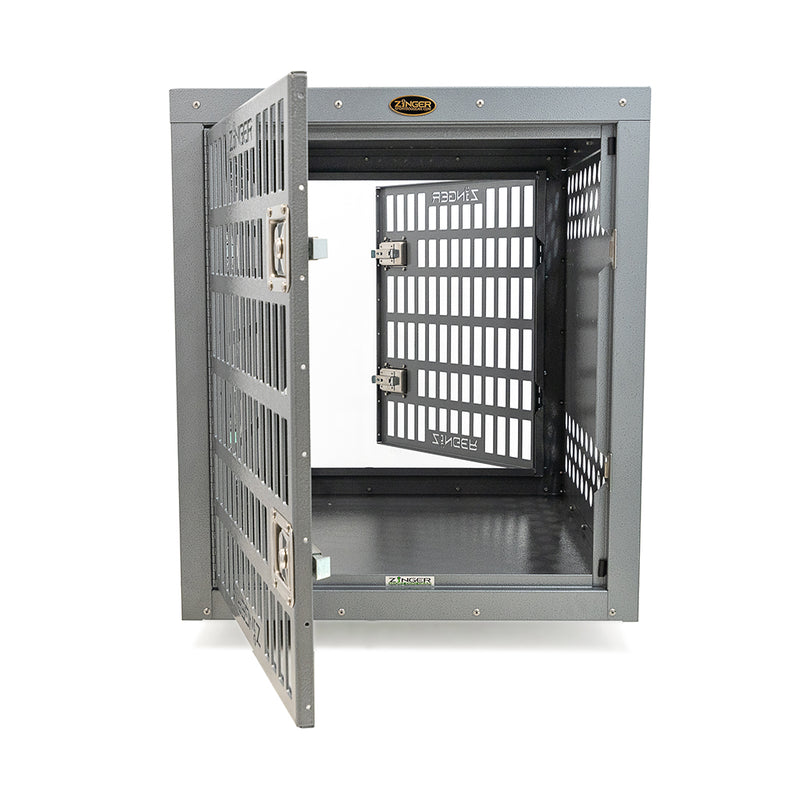Your Cart is Empty
Electronic Collars
Collars and Leads
Dog Tracking Systems
Dog Training
Bird Launchers
Hunting Dog Supplies
For The Hunter
Seven Things to Consider Before Taking Your Dog to the Beach
June 14, 2021 7 min read

Many dog owners that are planning a beach trip often think about how much fun it will be to have their dog running and playing on the beach with them. However, there are several things that dog owners should consider before taking their dog to the beach, or at least need to plan for if they choose to do so. The greatest concern for dogs on the beach, of course, is hydration and potential heat exhaustion, but things such as sun exposure, sand-filled fur, and bathroom breaks for your dog need to be considered to prevent mishaps that may put a damper on your beautiful day.
1. Know Your Beach Laws
Before taking your dog to any beach, you should research that beach’s dog laws. Some beaches may forbid dogs on the beach altogether, while some only allow dogs during certain times of year. Those that do allow dogs often have leash/lead restrictions, requiring your dog to be on lead at all times. Our LCS Stake Out is a great alternative to tying your dog to your beach chair. When choosing a lead to take with to the beach, we recommend something that is easy to clean and that is not going to be affected by water and sand. A rope or Leather Feel lead works great, while a traditional leather lead may be damaged by the elements. We also recommend always washing off all leads and collars with fresh water after exposure to salt water, as salt water will cause corrosion on the buckles and rings of the collars and leads.
2. Hydration
The next most important thing you will need to plan for is hydration for your dog. What is one of the number one things you pack yourself when you go to the beach? If you answered drinks, you are correct. Even more than humans, dogs on the beach are going to need to stay hydrated. Often times, dogs out of instinct will try to drink ocean water for hydration. It is important to stop them from doing this, as it can lead to them becoming even more dehydrated. Drinking salt water can also cause diarrhea and induce vomiting, which can further accelerate dehydration. The general rule of thumb for water intake per day for a dog is one ounce per body weight on an average day. That means a 60-pound dog needs to drink 60 ounces of water, or a half of gallon of water, per day. This water intake will increase when out on the beach in the sun, heat, and being active. This means that for a 60-pound dog, you might need to carry a gallon of water. Don’t forget to bring a water bowl!
If you want to learn more about dog dehydration, as well as the signs and symptoms of dehydration in dogs, see our blog Dehydration in Dogs.
3. Heat Exhaustion
Depending on the time of year and location, beaches can get really hot, even to the point that the wind may barely take the edge off. Add in the exposure to the sun, a dog can quickly become heat exhausted. Unlike humans, dogs cannot sweat away excess heat through their skin. Instead dogs have to regulate their body temperature through their mouth in the form of panting. While at the beach, it is important to keep an eye on your dog’s behavior. If they begin showing signs of heat exhaustion, it is of vital importance to act quickly. Have your dog rest or, if possible, cool off in the water. Again, please remember not to let them drink ocean water. If you brought a sunshade or umbrella, have your dog retreat to the shade for a much-needed break from the sun.
To learn more about heat exhaustion in dogs see our blog, Beat the Heat: Prevent Heat Exhaustion in Dogs.
4. Sun Exposure
Did you know that dogs can get sunburned just like we can? This can especially happen to dogs with lighter-colored fur or light coats. So what can you do to help keep your dog safe from sunburn? Perhaps the most effortless of solutions is one that you already do for yourself: provide shade for your dog to lie in and limit any long exposure to the sun. Providing shade at the beach can be quite easy by bringing either a pop-up sunshade or an umbrella along with you. There are also dog-friendly sunscreens available on the market. When applying sunscreen, make sure to get around their nose and ears, just like you would for yourself. Another option for relief from sun exposure is to put on a sun shirt for your dog, as it can help protect them against harmful UV rays. The brightest, most intense parts of the day are between 10am and 4pm, so early morning or evening beach play is best, if possible.
5. Sand
If you’re going to the beach, exposure to sand is inevitable. If you think getting covered in sand is irritating for yourself, think about what it’s like for your dog. While it may be fun to play in, it’s important to know that sand actually poses several dangers to your dog.
The first of which I feel the need to mention is temperature. Have you ever walked across the sand dunes in the afternoon barefooted? I did this once and the sand was so hot that it caused several blisters on the bottom of my feet that made the next two days of walking around extremely painful. It was something that I hadn’t considered possible because it’s just sand, right? So how does sand manage to get so hot? Well, it has to do with its’ specific heat, meaning the amount of energy (in this case, from the sun) required to raise the temperature of a particular substance or object. Sand has low specific heat, much lower than that of water. Sand also has a low thermal conductivity, which allows the energy to say at the topmost layer without being transferred beneath the surface; thus, resulting in the sand reaching temperatures of up to 130 degrees F. This explains why it’s hot on the surface, but significantly cooler if you dig your feet in it.
If sand has the ability to hurt your feet, consider this when you have your dog running around with their bare pads. Like our feet, the hot sun shining down onto walking surfaces can cause blisters or damage to the dog’s pads and toe webbing. The easiest way to prevent this is to limit exposure to morning or later afternoon hours when the sun is not at its hottest. You can also put dog boots on your dogs to protect direct exposure to the sand. It is important to choose the right dog boots though, as dogs sweat through their feet. For these circumstances, you’ll need a breathable or vented boot. If you opt not to arm your dog with dog boots, then I recommend carrying your dog past the point of loose sand on the beach. Once you get to packed, wet sand nearer to the ocean, the specific heat is higher and therefore cooler on your feet and their paws.
While we’re on the topic of hot sand, also remember pavement gets really hot in the sun as well. If its 80+ degree outside, pavement can be as hot as 140 degrees!
Staff Tip: Test any surface that your dog will be walking on by putting your hand on the surface and hold it there for at least 5 seconds. If you cannot hold it there without discomfort or pain, then it’s also too hot for your dog’s paws.
Not only is the sand’s temperature something you have to worry about, but sand is also going to get into your dog’s coat. All this sand stuck in their coat is coming back with them to your car or beach house. Beyond the mild annoyance of getting sand where you don’t want it, even worse than that is sand stuck in your dog’s coat that can cause skin irritation, especially in dogs with sensitive skin. Be sure to wash your dog off with fresh water as soon as possible. If your thoughts are, “I’ll just wash them off in the ocean water,” think again. Ocean water has its own array of skin irritants from the salt and bacteria.
If hot sand and skin irritation weren’t enough to worry about, you have to also be mindful of sand ingestion. If your dog ingests too much sand, this can result in sand impaction, which occurs when sand gets impacted in the digestive track of your dog. Unfortunately, this could cause a blockage of the intestines, leading to constipation and abdominal pain. While at the beach, try to limit any sand ingestion by not allowing your dog to eat anything that is lying directly on the sand, and also try to reduce any sand in their water or feed bowls.
6. Water Safety
If you are going to allow your dog to swim in the water, you must keep water safety in mind. There are many things that can hurt, or is a direct danger to, a dog swimming in ocean water. If your dog is swimming in water over their heads, strong currents or riptides can quickly become life-threatening. A riptide is strong offshore current that can pull swimmers out to sea into deeper waters. Dogs can tire out faster than human swimmers, so taking frequent breaks is very important because a tired dog is more susceptible to drowning. During rougher days, it is important to consider the wave heights and how hard they are crashing. Dogs can be injured by crashing waves, either by the wave crashing directly onto them or by the wave rolling onto the shore.
7. Bathroom Breaks
The last thing to think about before taking your dog to the beach is bathroom breaks. Your dog is going to need to relieve themselves. It is important to clean up after your dog’s bathroom breaks, not only for yourself and other people on the beach, but also for the environment. Please do not dig a hole and throw the dog waste in the hole and bury it! In our Spring Cleanup blog article, we discussed the environment and health risks of dog waste. Dog waste is high in nitrates and bacteria that are both harmful to humans and especially other dogs.
Did you know: Dog waste being washed away carries bacteria into the waterways, accounting for as much as 30% of the bacteria found in our waterways, as well as containing nutrients that can cause algae and weed growth in water bodies? This can damage the aquatic ecosystem.
Conclusion
Hopefully after reading this, you’re more prepared and mindful of having your dogs at the beach. This can be a lot of fun and be a great, full family experience.
We hope everyone has a great summer. Have fun and stay safe!
- Michael Cassatt, LCS Director of Marketing
Leave a comment
Comments will be approved before showing up.
Subscribe
Sign up to get the latest on sales, new releases and more …
Featured Products

Subscribe
Sign up to get the latest on sales, new releases and more …



